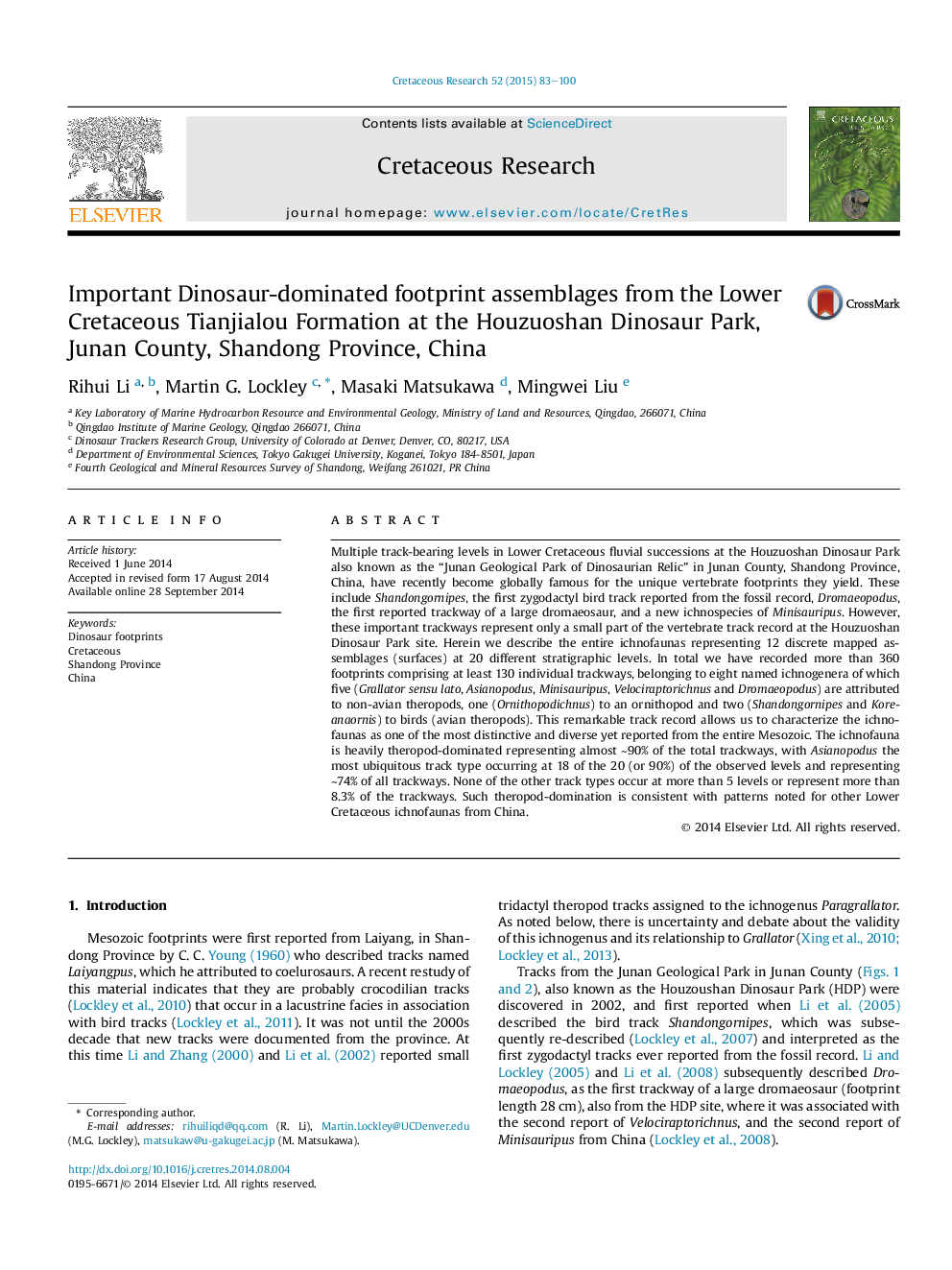| Article ID | Journal | Published Year | Pages | File Type |
|---|---|---|---|---|
| 4747064 | Cretaceous Research | 2015 | 18 Pages |
Multiple track-bearing levels in Lower Cretaceous fluvial successions at the Houzuoshan Dinosaur Park also known as the “Junan Geological Park of Dinosaurian Relic” in Junan County, Shandong Province, China, have recently become globally famous for the unique vertebrate footprints they yield. These include Shandongornipes, the first zygodactyl bird track reported from the fossil record, Dromaeopodus, the first reported trackway of a large dromaeosaur, and a new ichnospecies of Minisauripus. However, these important trackways represent only a small part of the vertebrate track record at the Houzuoshan Dinosaur Park site. Herein we describe the entire ichnofaunas representing 12 discrete mapped assemblages (surfaces) at 20 different stratigraphic levels. In total we have recorded more than 360 footprints comprising at least 130 individual trackways, belonging to eight named ichnogenera of which five (Grallator sensu lato, Asianopodus, Minisauripus, Velociraptorichnus and Dromaeopodus) are attributed to non-avian theropods, one (Ornithopodichnus) to an ornithopod and two (Shandongornipes and Koreanaornis) to birds (avian theropods). This remarkable track record allows us to characterize the ichnofaunas as one of the most distinctive and diverse yet reported from the entire Mesozoic. The ichnofauna is heavily theropod-dominated representing almost ∼90% of the total trackways, with Asianopodus the most ubiquitous track type occurring at 18 of the 20 (or 90%) of the observed levels and representing ∼74% of all trackways. None of the other track types occur at more than 5 levels or represent more than 8.3% of the trackways. Such theropod-domination is consistent with patterns noted for other Lower Cretaceous ichnofaunas from China.
